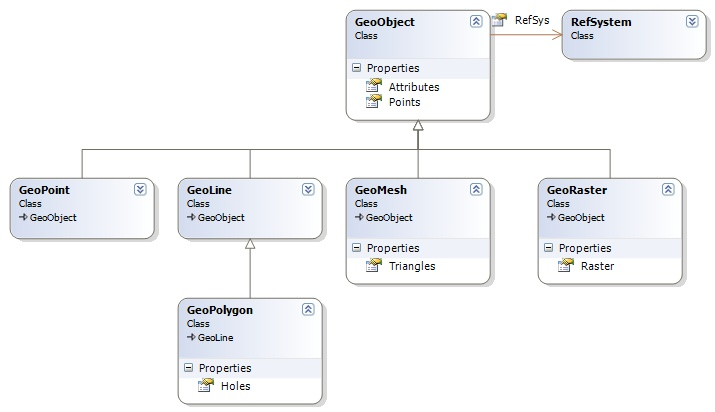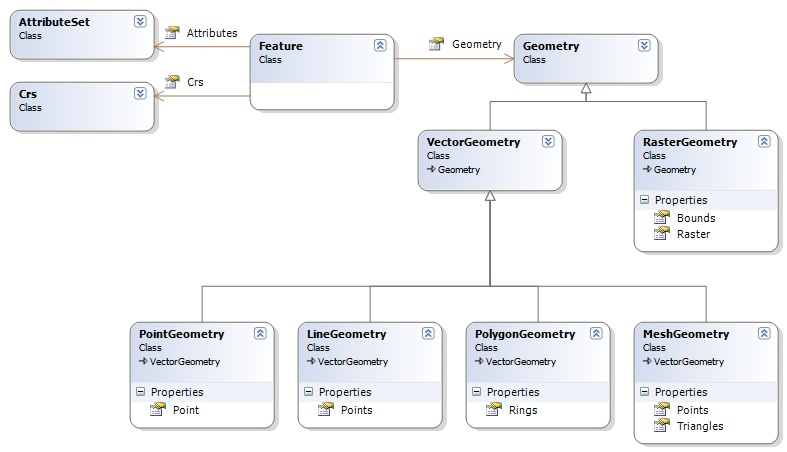Migrating to the new Feature Model
GeoObject Model in Carmenta Engine 4.x
The GeoObject hierarchy was used in Carmenta Engine 4.x to represent objects with a geographic position.
 |
The old model had a couple of problems as can be seen in the diagram above:
The GeoObject base class held a collection of points that were used in different ways by all the subclasses. For example, in a GeoPolygon they defined the outline while the holes were a part of the GeoPolygon class and in a GeoRaster it was assumed the list contained two points that defined the corner points in the bounding rectangle of the raster.
While it was possible to read and write the geometry of a GeoObject the geometry was never the actual representation of the position of a GeoObject.
The GeoObject.Points property returned a copy of the points collection.
The GeoObject.Attributes property returned a copy of the attributes.
The new Feature Model
Carmenta Engine 5 introduces a new model for objects with a geographical position and it is displayed in the picture below.
 |
The key differences are:
A Feature is a concrete class that can be instantiated and it consists of a Geometry, a Crs in which the geometry is defined and an AttributeSet.
The Feature.Attributes property returns the attributes associated with a Feature by-reference.
The Feature.Geometry property returns the geometry of a Feature by-reference and the geometry is the representation of the position of the Feature.
Carmenta Engine 5 also provides multi-geometry classes but does not support creating features with them.
Migrating to the new representation
The following table describes the new representation of old-style GeoObject instances.
Carmenta Engine 4.x | Carmenta Engine 5 |
|---|---|
GeoObject | |
GeoPoint | Represented by a Feature with a PointGeometry. |
GeoLine | Represented by a Feature with a LineGeometry. |
GeoPolygon | Represented by a Feature with a PolygonGeometry. |
GeoRaster | Represented by a Feature with a RasterGeometry. |
GeoMesh | Represented by a Feature with a MeshGeometry. |